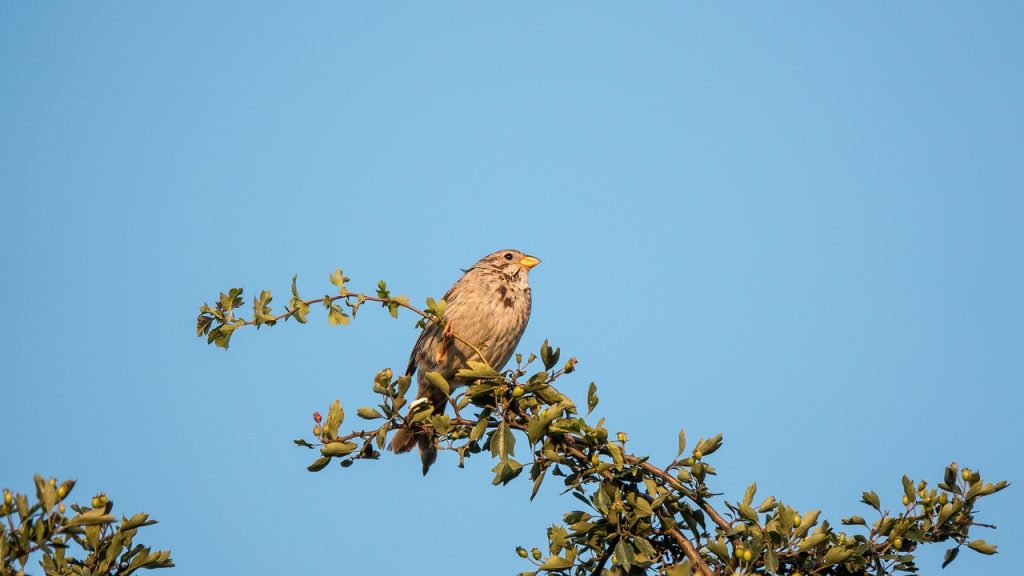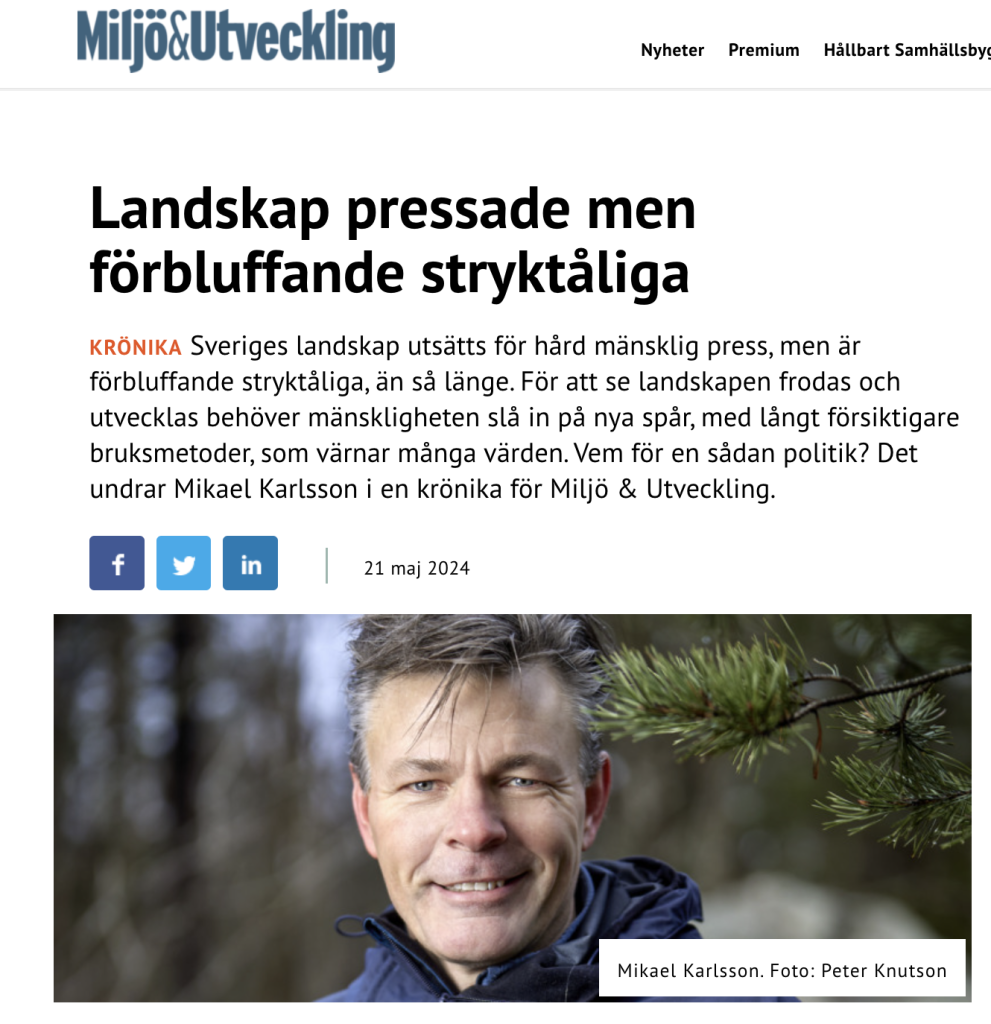Biodiversity — the variation of species, genes, and ecosystems—is crucial for all life on Earth, including humanity. Research shows that one million species are globally threatened by extinction due to human activity, a situation that also affects Sweden. This summer, several opinion pieces were published in Swedish newspapers about the relationship between development and the environment, with contributions from Tuija Hilding-Rydevik, a professor with the LANDPATHS program.

Nature protection and development as rivals
In May 2024, representatives from Sweden’s Moderate Party wrote an article in DN Debatt, arguing that the protection of “common species” is often prioritized over development, which they believe requires political change. According to the Moderate Party’s policy program, environmental policy should focus on human needs for natural resources and development, even if it involves compromises that negatively impact endangered species. They also proposed that landowners in forestry and agricultural landscapes who promote biodiversity should have greater freedom in how they use their land. The article also questioned the general decline in biodiversity.
Reactions
The article written by the Moderate Party sparked a wave of responses and articles in the Swedish press. Tuija Hilding-Rydevik, a professor emeritus in Environmental Assessment at the Swedish University of Agricultural Sciences (SLU) and leader of LANDPATHS Agricultural Landscape subproject, co-authored two articles responding to the Moderates’ claims.
“My reaction was clear: how uninformed the authors must be about humanity’s dependence on biodiversity, and the threats that ultimately affect us and our societies. Preserving and promoting biodiversity means keeping human needs in mind—today and tomorrow. The second reaction was that it’s good to have their positions stated so clearly, so they can be countered.”
Tuija Hilding-Rydevik
Researchers warn of widening gap between humans and nature
The first response was published as an opinion piece in Altinget Miljö och Energi in June 2024, co-authored by over 20 researchers. They criticized the Moderates’ claim of a conflict between development and the environment. According to the researchers, this misconception creates a dangerous polarization between humans and nature. They stressed that biodiversity is essential for human survival and economies, and warned that the Red List Index shows an accelerating loss of species globally—a clear sign of ecosystem distress.
The researchers also emphasized that the full value of biodiversity is difficult to quantify in monetary terms. With a planet already dominated by human activity, this poses an urgent threat to ecosystem services such as food, clean water, protection from disease, and climate disasters.
Proposal for a nature policy framework
A follow-up to this opinion piece came in July 2024 in Göteborgsposten, where over 50 researchers and civil society representatives warned that the loss of biodiversity is a threat to humanity’s future, to the same extent as climate change.
The authors called for the introduction of a “nature policy framework,” similar to the existing climate policy framework, to stop and reverse the loss of species and habitats. They proposed a natural law, a nature policy goal, and a nature policy council.
The nature crisis requires societal transformation
The article criticized cuts to conservation budgets and decreasing support for making sectors like agriculture and forestry sustainable. Addressing the nature crisis requires a societal transformation, with all sectors contributing. The nature and climate crises are closely linked, and solutions to one must consider the other.
The authors suggested that by establishing a nature policy framework with concrete goals and resources, Sweden could take a leadership role in reversing the trend and ensuring a sustainable future. The government and parliament are urged to act immediately and implement this proposal to protect nature and thus humanity’s future.
Biodiversity in agricultural landscapes
Fifty percent of the more than 4,700 red-listed species are found in agricultural landscapes. This environment is critical for about one-third of these species. Threats to plants mainly stem from changes in land use, leading to overgrowth, increased nutrient loads, reduced land management (e.g., less grazing and mowing), climate change, and reduced connectivity for the movement of plants and animals (fragmentation). Agriculture relies on ecosystem services provided by nature, such as pollination from insects, contributions to favourable soil structure for cultivation, and pest control by naturally occurring predators.
Therefore, it is important that the 64 billion SEK in subsidies and payments to Sweden’s farmers through the EU’s Common Agricultural Policy benefit both farmers’ production and biodiversity in the agricultural landscape. This issue is being studied in depth in the Agricultural Landscape subproject within LANDPATHS.

